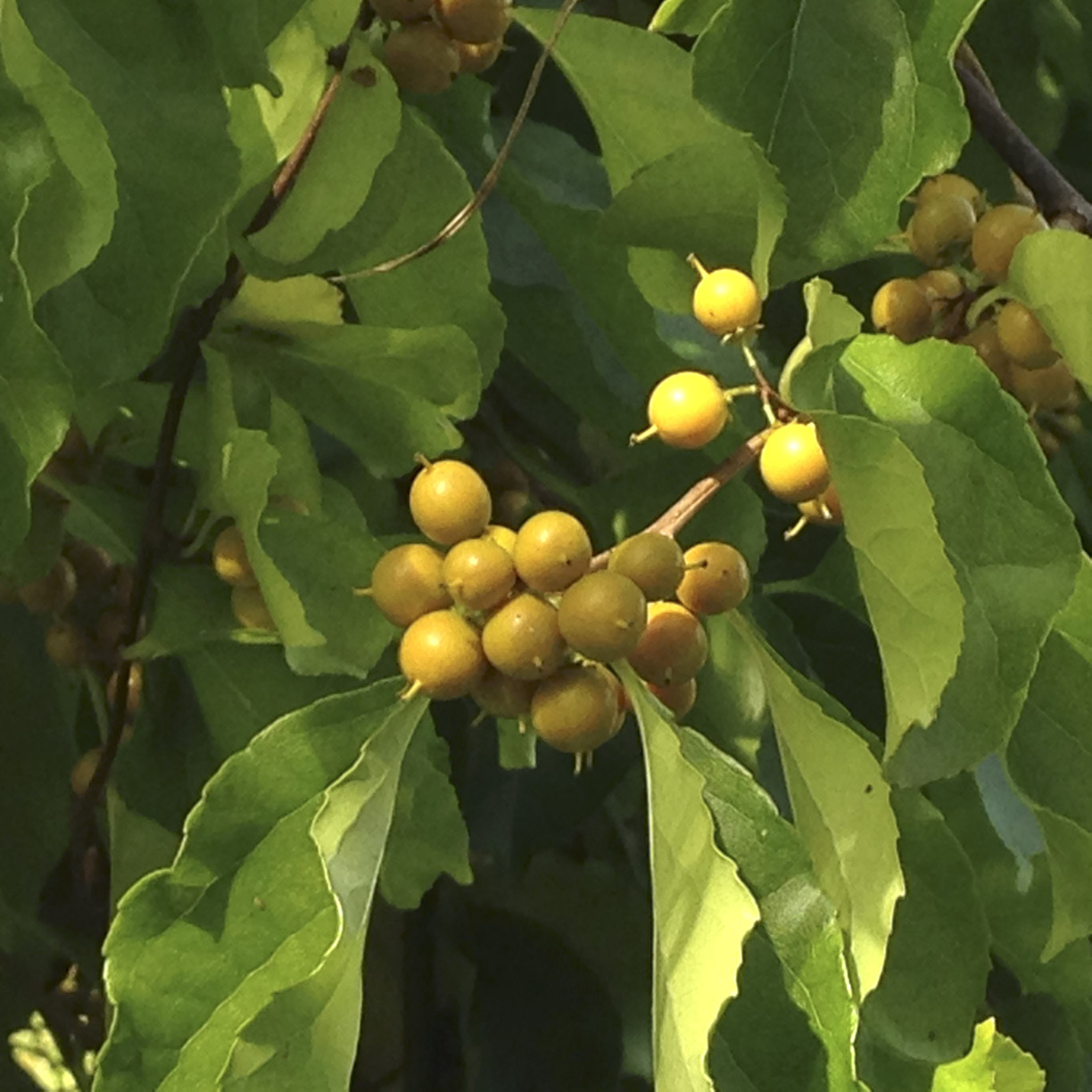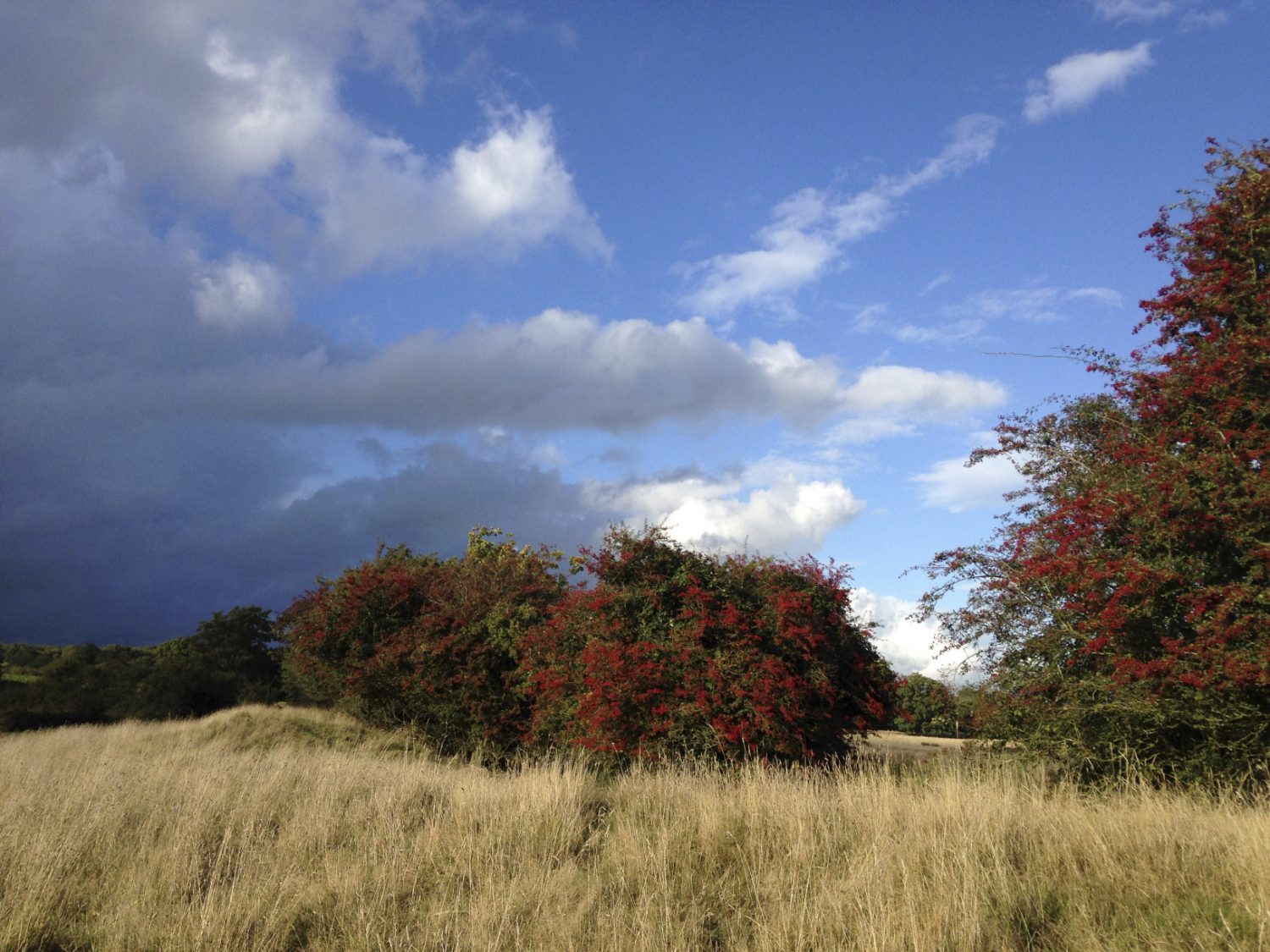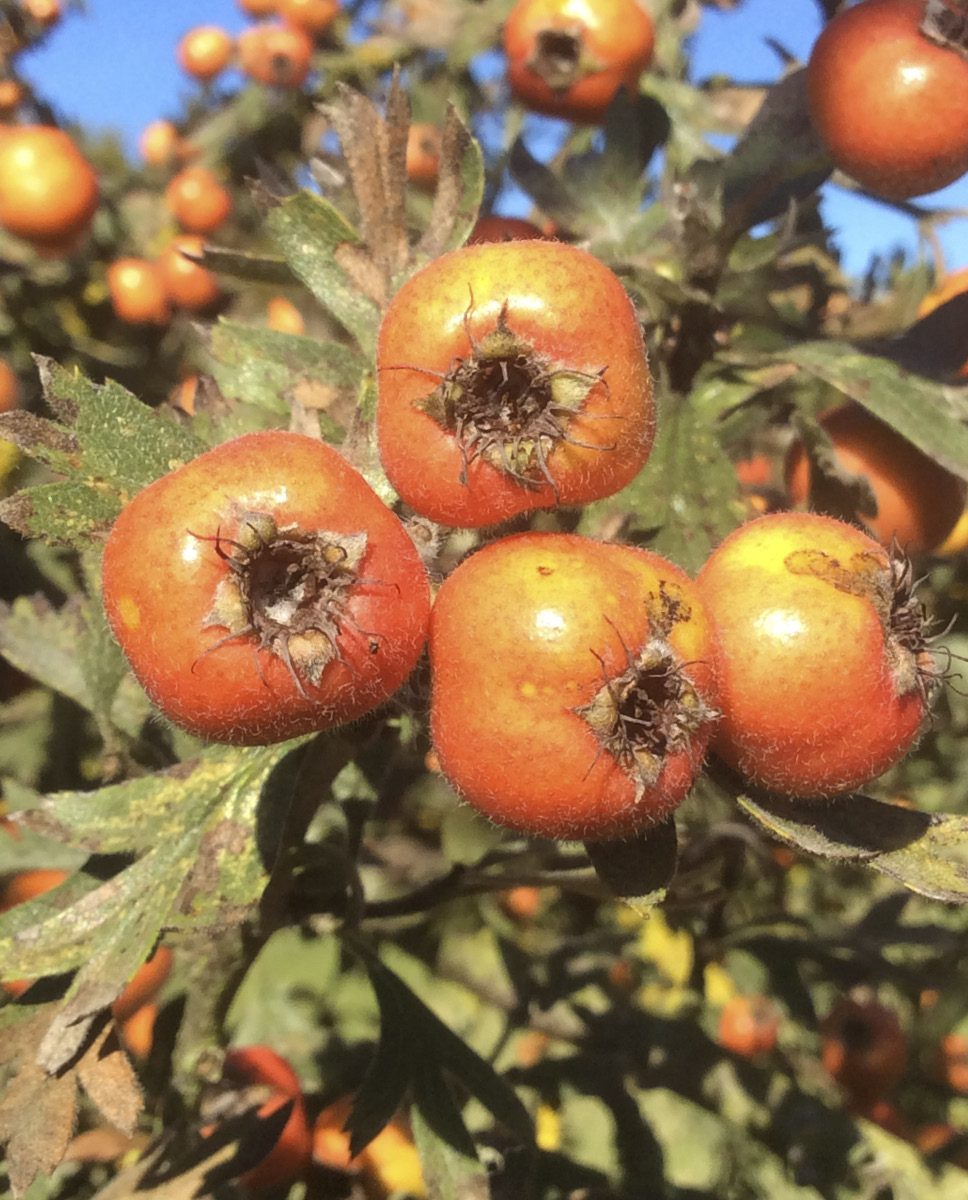I heard David Hockney on Radio 4 the other day talking about a visit he made to Japan to see the glory of the cherries in full blossom. He loved them but said he was just as happy looking down into a Yorkshire valley and seeing clouds of hawthorn blossom. The May or hawthorn (Crataegus monogyna) has been tremendous this year, smothered with a froth of white flowers, which now have metamorphosed into thousand upon thousand of red fruits. A feast for the eyes and a generous store of food for birds.
I rather love the grey leaved Crataegus tanacetifolia, first spotted in the grounds of Stowe. A tansy-leaved hawthorn, it’s mighty slow growing but its combination of soft grey downy leaves and a pale orange fruit is charming and unusual and worth waiting for.
Euonymus is another group of plants that produce fabulous autumn fruits, varying in range from shrubs and small trees to climbers and creepers. There’s a good specimen of a climber at Great Dixter which always catches the eye at this time of the year. This is Celastrus orbiculatus ‘Hermaphrodite’ – its name is quite a mouthful for a graceful, strong growing climber. The combination of ochre yellow berries opening to bright scarlet seeds looks amazing in the autumn against a backdrop of clear yellow leaves.
Euonymus europaeus ‘Red Cascade’ is a selected form of our native spindle, which is often seen as a hedgerow plant especially where there’s chalky soil. This is particularly floriferous, weighed down with red fruits which break open to reveal orange seeds in a rather startling combination.
At Sheffield Park there’s a good specimen of a relation of this, E. hamiltonianus, which originates from the Himalayas. The subspecies sieboldianus is an absolute show stopper with a combination of pink, yellow and red autumn colour and rosy pink fruits opening out to orange seeds.
Viburnum opulus or the Guelder rose needs a lot of room but is worth growing for its maple-like leaves which colour up well in the autumn and its white flowers in mid to late summer. They’re a little like those of a lacecap hydrangea, frothy and exceedingly pretty. It’s a native plant which flourishes in damp areas and a particularly lovely form, ‘Xanthocarpum’, instead of having glistening red berries, produces bright and translucent yellow berries.
Quite a lot of the viburnums have good autumn berries and as they’re pretty easy to grow, they’re worth looking out for.
Another favourite group of plants for their autumn fruit are the crab apples (Malus). There are so many varieties and so many of them ‘do’ something wonderful throughout the year.
The better known ones such as Malus ‘Evereste’ and M. ‘John Downie’, the latter being one of the best fruiting of the lot, are worth growing but it’s fun to look into alternatives.
M. hupehensis, which was discovered in Hupeh province by Ernest ‘Chinese’ Wilson on one of his plant hunting odysseys, is a lovely thing: combining fragrant white flowers with masses of small dark red fruits in autumn.
Wilson was one of the greatest plant hunters. He started life as an apprentice gardener’s boy in the Midlands and worked his way up to working at Kew Gardens. Eventually he was employed by James Veitch and Sons to work as a plant collector. Despite horrendous conditions in China, including an outbreak of the plague, malaria and political unrest, he returned with nearly a thousand plant species along with the seeds of another three hundred, most of which we take for granted now.
He also discovered M. toringoides in Western China at about the same time. This has a rather different habit to M. hupehensis having wide spreading branches and very deeply lobed leaves. The flowers are just slightly scented and a creamy white but the fruit is very striking as each one is pear shaped and ‘two tone’ in shades of red and yellow.
Sorbus are another genus with a huge range of plants with stunning autumn colour and berries. E.H. Wilson also found Sorbus hupehensis in China and a particularly good selection is ‘Pink Pagoda’. I love this little tree. It really is so striking and beautiful, both for its bluish green, sharply toothed leaves but in particular for its pink tinged fruits. There’s a great example near the top of Battleston Hill at RHS Wisley should you be going that way, and whilst it is tucked away with a lot of other interesting trees and shrubs, it always seems to stand out to me because of the colour of the berries combined with its leaves.
Actually, the more I think about it, the more I think that it’ll have to be added to my imaginary Christmas list. Even its branches are decorative as they have a purple hue.
TEST

Wilson was one of the greatest plant hunters
TEST
Autumn berries provide a great feast for birds
- words: Sue Whigham
You may also like
Go with the Flow
Sue Whigham shares some valuable new-to-gardening advice I’m sure that by now we should be used to the rain but I’m not entirely sure that we are. We had a dry, sunny day the other day and how everybody’s mood...
Farm Fables
Jane Howard gets to the bottom of why so many ponds have disappeared across the High Weald I have a new passion, almost an obsession, it’s about ponds. And there’s a distinct possibility I might become a bit of a...
Hedge Issues
Sue Whigham takes a meander along nature’s verdant and vital corridors Recently the BBC’s Today programme carried a feature about England’s hedgerows which created a lot of interest among listeners. On the strength of that, Martha Kearney interviewed one of...















